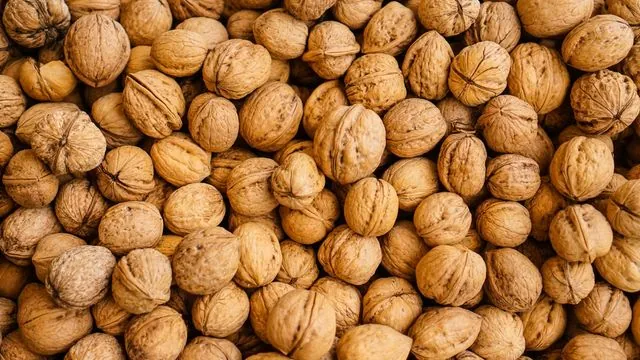
Unlocking the Secrets of 40-Million-Year-Old DNA: How Walnuts Alternate Between Male and Female
2025-01-03
Author: Daniel
Unlocking the Secrets of 40-Million-Year-Old DNA: How Walnuts Alternate Between Male and Female
Scientists at the University of California, Davis, have made a groundbreaking discovery regarding the genetics behind the unique flowering habits of walnut trees. Published in the journal *Science*, the study reveals an intricate mechanism that drives the alternation between male and female flowers in walnut trees—a trait that has evolved and remained stable for approximately 40 million years. This fascinating mechanism bears striking similarities to sex determination seen in humans and many other animals.
In the plant kingdom, various strategies exist to avoid self-pollination. While some plants have structural adaptations to make self-fertilization less likely, others maintain separate male and female specimens. Notably, walnut trees, along with closely related species like hickory and pecan, take this one step further. They exhibit a remarkable phenomenon called temporal dimorphism, where individual trees display either male or female flowers during the growing season. This intriguing behavior was first noted by Charles Darwin in 1877, with further details uncovered by a UC Davis graduate student, Scott Gleeson, in the 1980s, who linked this flowering trait to a single genetic locus.
Jeff Groh, a graduate student in population biology and the first author on the paper, explained, "Walnuts and pecans alternate their flowering types throughout the season. While this phenomenon has been recognized since the 1800s, our study is the first to uncover the underlying molecular mechanisms."
This alternating flowering pattern is observed in both cultivated walnuts and their wild relatives, including the Northern California black walnut, with nearly equal representation of male-first and female-first flowering types in the wild.
To unravel this genetic mystery, Groh and his advisor, Professor Graham Coop, utilized data from UC Davis's walnut breeding program and studied the flowering patterns of native walnut trees in the vicinity of the campus. After categorizing the trees into male-first or female-first groups, they sequenced their genomes and pinpointed specific sequences associated with these traits.
Remarkably, the research revealed two variants of a gene that dictate whether a walnut tree flowers first as male or female. These DNA polymorphisms not only exist in walnuts but also span at least nine other species, showcasing their stability over nearly four decades.
“It’s quite unusual for such variation to persist over millions of years,” Groh commented. This balance means if one flowering type becomes predominant in the population, the lesser common type gains an advantage in mating opportunities, thus maintaining a 50:50 genetic equilibrium over time.
The study also extended its findings to pecans, revealing a similar balanced genetic polymorphism governing their flowering order, although it stems from a different genomic region and appears to have originated over 50 million years ago.
The researchers posed an intriguing question: how did related species like walnuts and pecans develop similar flowering mechanisms through different genes? The answer may lie in their evolutionary history, suggesting that walnut and pecan ancestors might have converged on similar adaptations or that this complex flowering system emerged as far back as 70 million years ago, with evolving genetic mechanisms over time.
What’s particularly captivating is the parallel this research draws to animal sex determination systems, where similar structural variants (like the X and Y chromosomes in humans) maintain a dynamic balance in populations.
“This study reveals clear parallels between plant and animal sex determination,” Groh concluded.
This discovery not only enhances our understanding of walnut tree genetics but also sheds light on the evolutionary processes that govern sexual reproduction in a variety of life forms. With such a rich history tied to the evolution of flowering plants, this research opens the door to further exploration of genetic mechanisms in other species as well. Don’t miss out on the unfolding story of how ancient DNA shapes life today!


 Brasil (PT)
Brasil (PT)
 Canada (EN)
Canada (EN)
 Chile (ES)
Chile (ES)
 Česko (CS)
Česko (CS)
 대한민국 (KO)
대한민국 (KO)
 España (ES)
España (ES)
 France (FR)
France (FR)
 Hong Kong (EN)
Hong Kong (EN)
 Italia (IT)
Italia (IT)
 日本 (JA)
日本 (JA)
 Magyarország (HU)
Magyarország (HU)
 Norge (NO)
Norge (NO)
 Polska (PL)
Polska (PL)
 Schweiz (DE)
Schweiz (DE)
 Singapore (EN)
Singapore (EN)
 Sverige (SV)
Sverige (SV)
 Suomi (FI)
Suomi (FI)
 Türkiye (TR)
Türkiye (TR)
 الإمارات العربية المتحدة (AR)
الإمارات العربية المتحدة (AR)